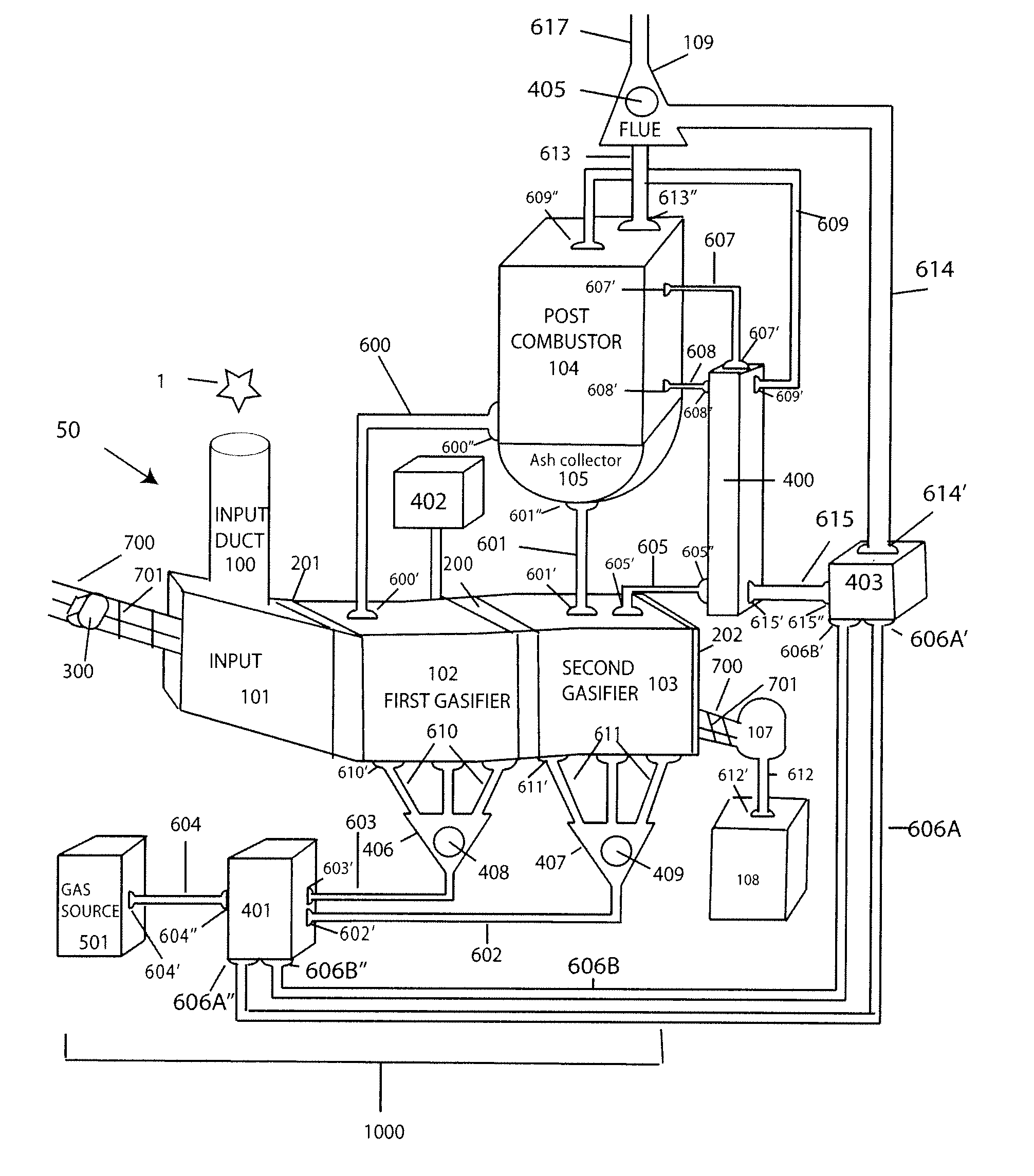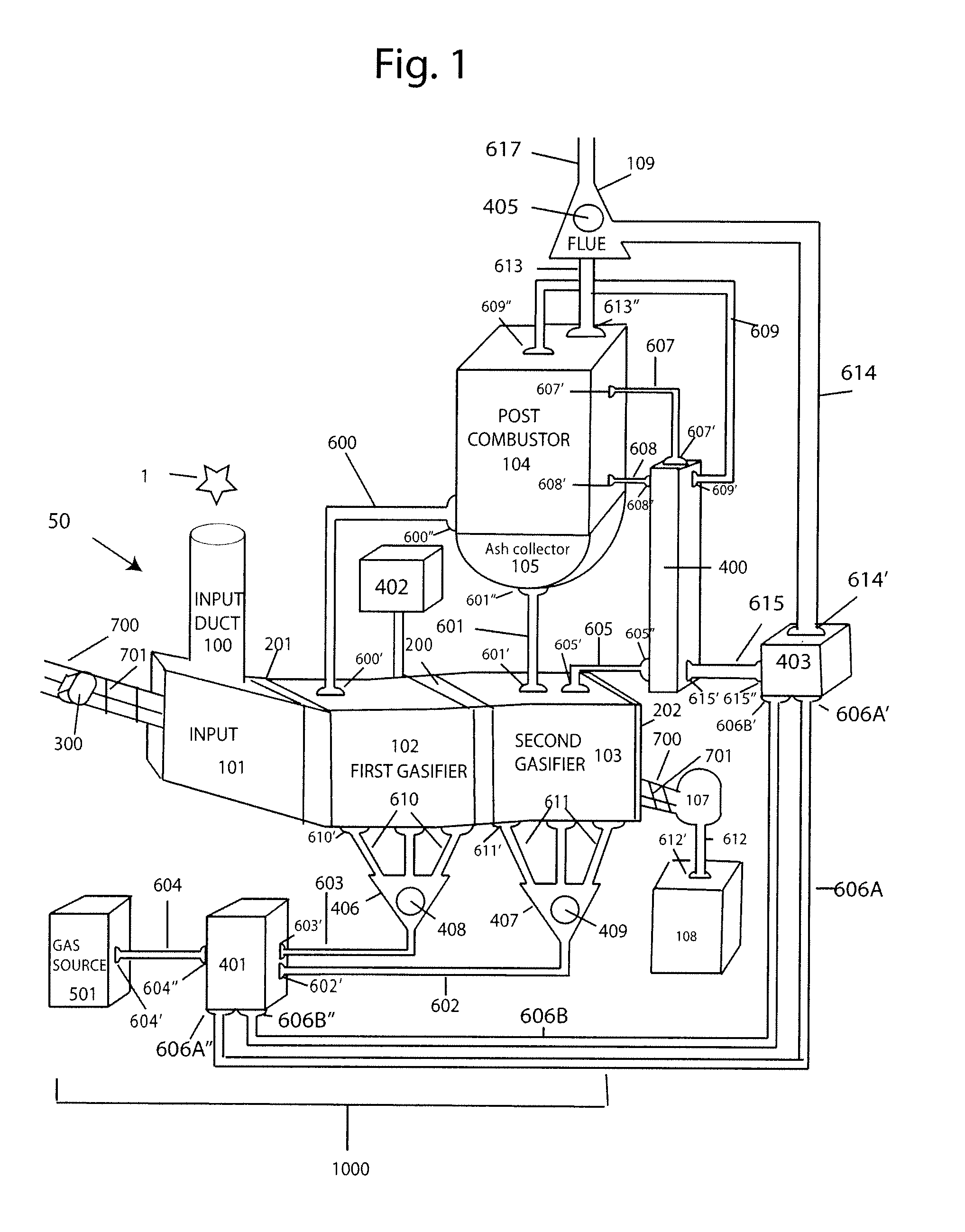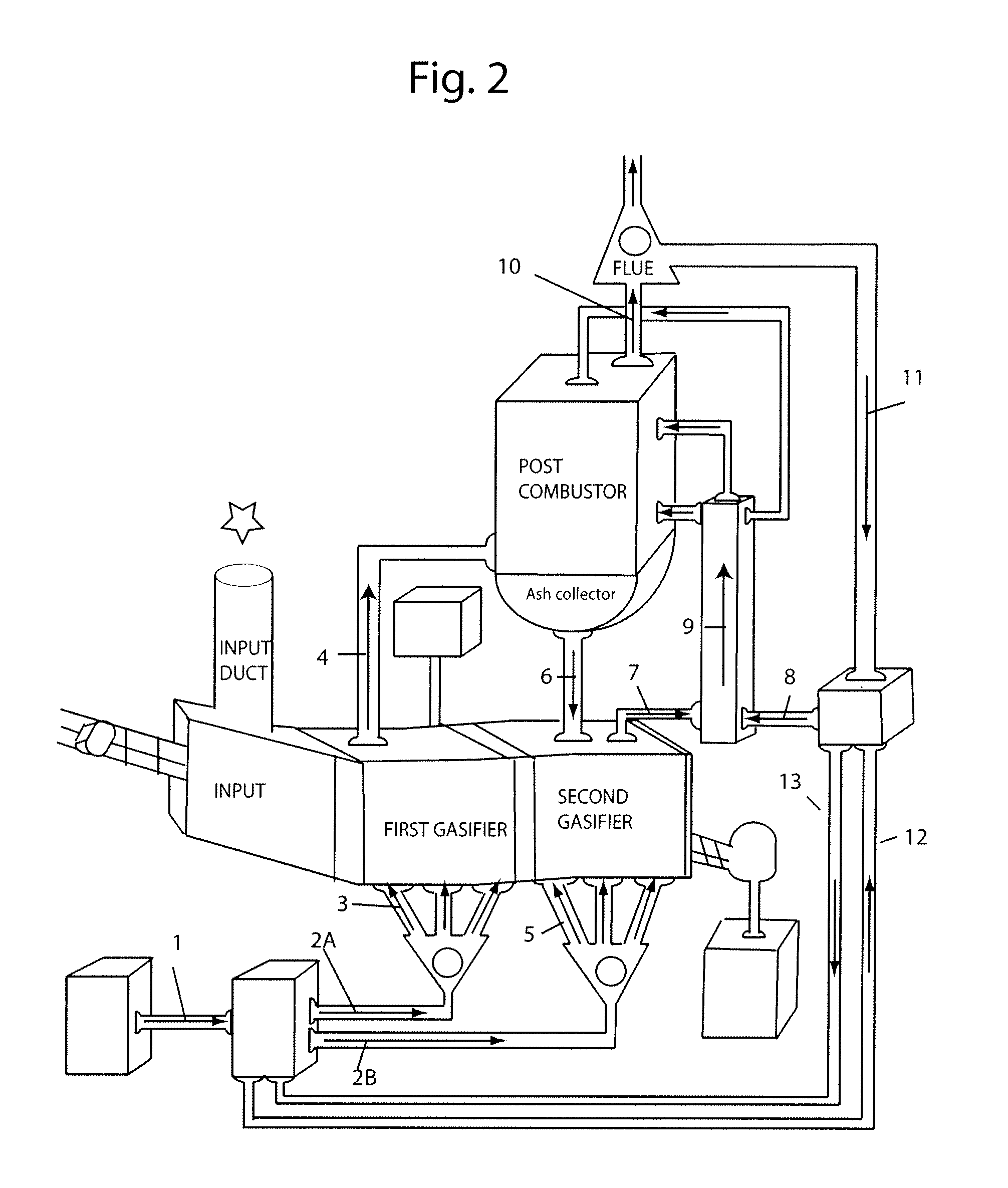Gasification combustion system
- Summary
- Abstract
- Description
- Claims
- Application Information
AI Technical Summary
Benefits of technology
Problems solved by technology
Method used
Image
Examples
Embodiment Construction
[0017]FIG. 1 illustrates an embodiment of the present invention. The combustion gasification system (broadly denoted as element 50) comprises an input 101 for receiving refuse 1, a first gasifier 102, a second gasifier 103, and a post combustor 104. Refuse 1, trash, or waste may be placed into the input 101 through an input duct 100 containing an outer housing. The input 101 may comprise an opening formed by an outer housing for receiving the refuse. Processing of the refuse 1 typically begins in the first gasifier 102. Processing may include one or more of the following functions: drying, devolatilizing, gasification, or combustion. In some embodiments oil or other flammable substances may be added to the refuse 1 to facilitate combustion.
[0018]Once inside the input 100, the refuse 1 may be advanced through the system 50 by a refuse advancer 700. The refuse advancer 700 may take form of a hydraulic ram 300 and grate 701 as shown in FIG. 1, or a self advancing advancer may be used. ...
PUM
 Login to View More
Login to View More Abstract
Description
Claims
Application Information
 Login to View More
Login to View More - Generate Ideas
- Intellectual Property
- Life Sciences
- Materials
- Tech Scout
- Unparalleled Data Quality
- Higher Quality Content
- 60% Fewer Hallucinations
Browse by: Latest US Patents, China's latest patents, Technical Efficacy Thesaurus, Application Domain, Technology Topic, Popular Technical Reports.
© 2025 PatSnap. All rights reserved.Legal|Privacy policy|Modern Slavery Act Transparency Statement|Sitemap|About US| Contact US: help@patsnap.com



